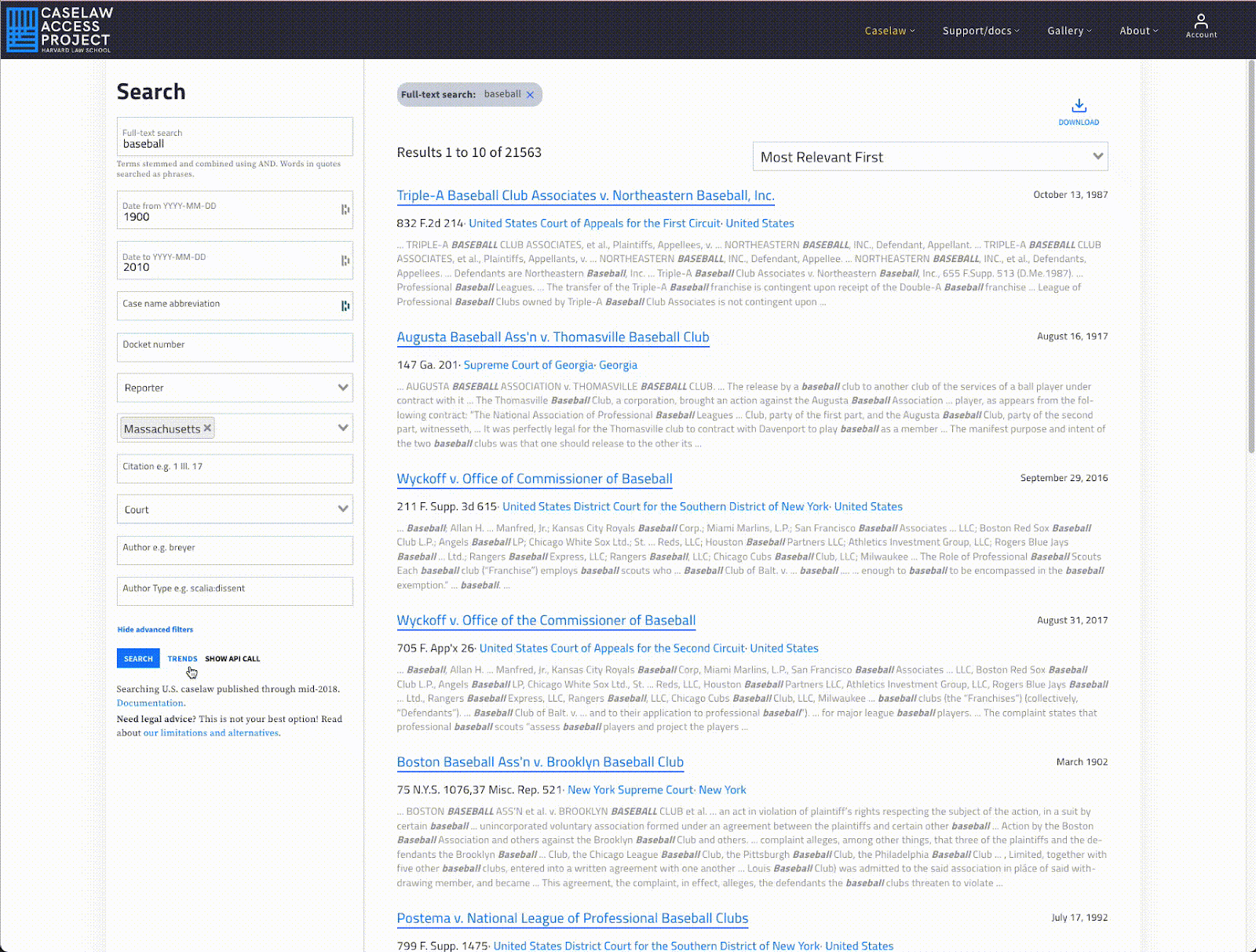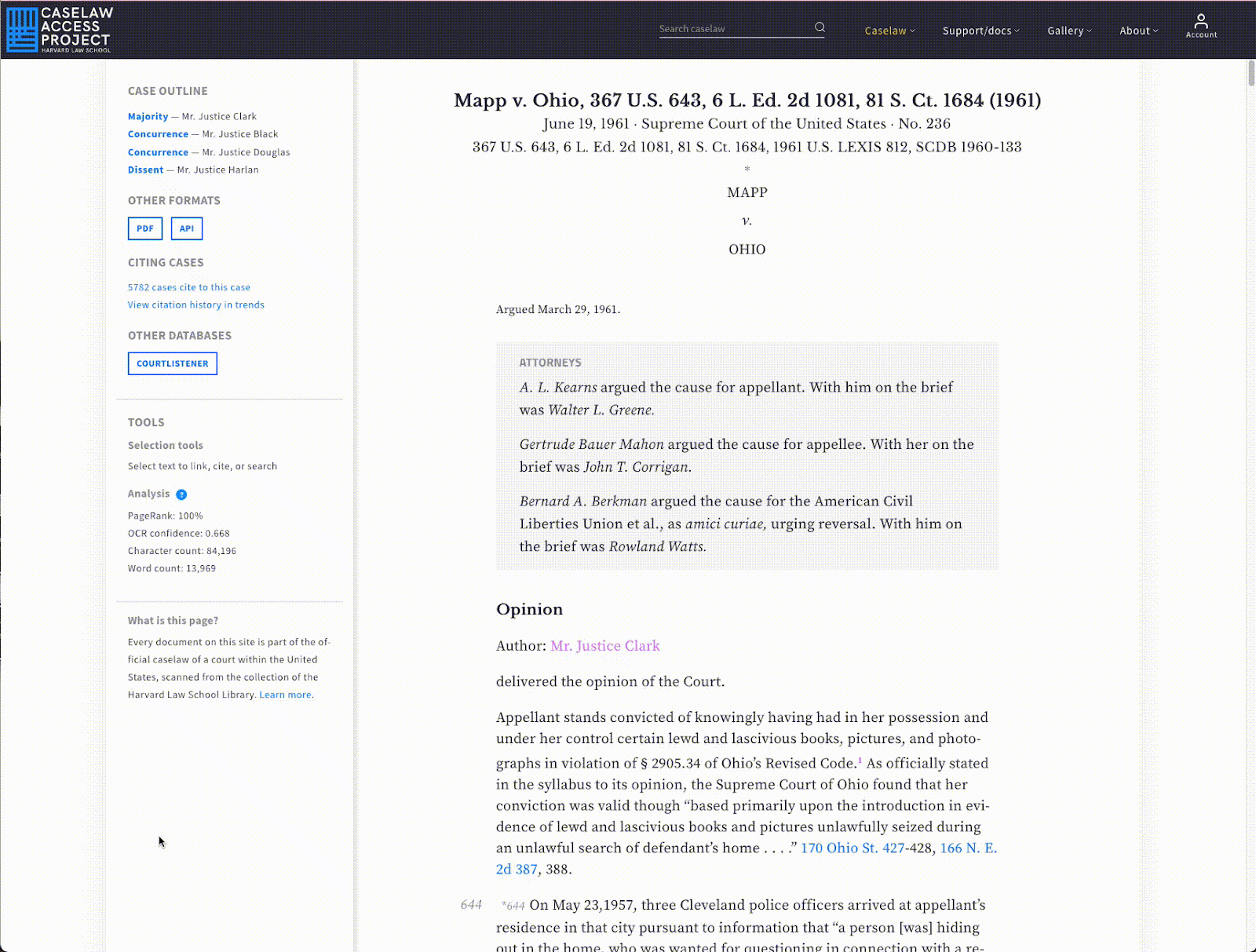Authors:
Published:
With expanded feature capabilities, users may find writing these queries to be more difficult, especially as researchers increase the complexity of their investigations. To make usage easier, we have integrated the Trends query language into the Search and Case View features. From a search query, users can click the Trends button, upon which our servers will automatically convert an existing query into a Trends timeline.

Additionally, users can now view the citation history of a particular case from that case’s page by clicking the “View citation history in trends” button.

Our exploration of timeline generation for empirical legal scholarship has inspired us to reimagine how people reason about CAP’s corpus of American caselaw. In the future, we hope to restructure the search page further and empower people to quickly ask complex questions about American caselaw over time.
We believe that citation-based analysis can significantly enrich our understanding of American caselaw, and we are excited to see how these tools can expose insights both in the law itself and in quantitative techniques for its exploration. If you have any ideas for how we can further expand on these features, please do not hesitate to reach out to us at info@case.law.
This is part of a series of posts by Andy Gu, a visiting researcher who joined the LIL team in summer 2021. We were inspired to build these features after recognizing the power of the Caselaw Access Project’s case and citation data to analyze and explore caselaw. We hope that these features will make empirical study of caselaw both faster and more accessible for researchers.